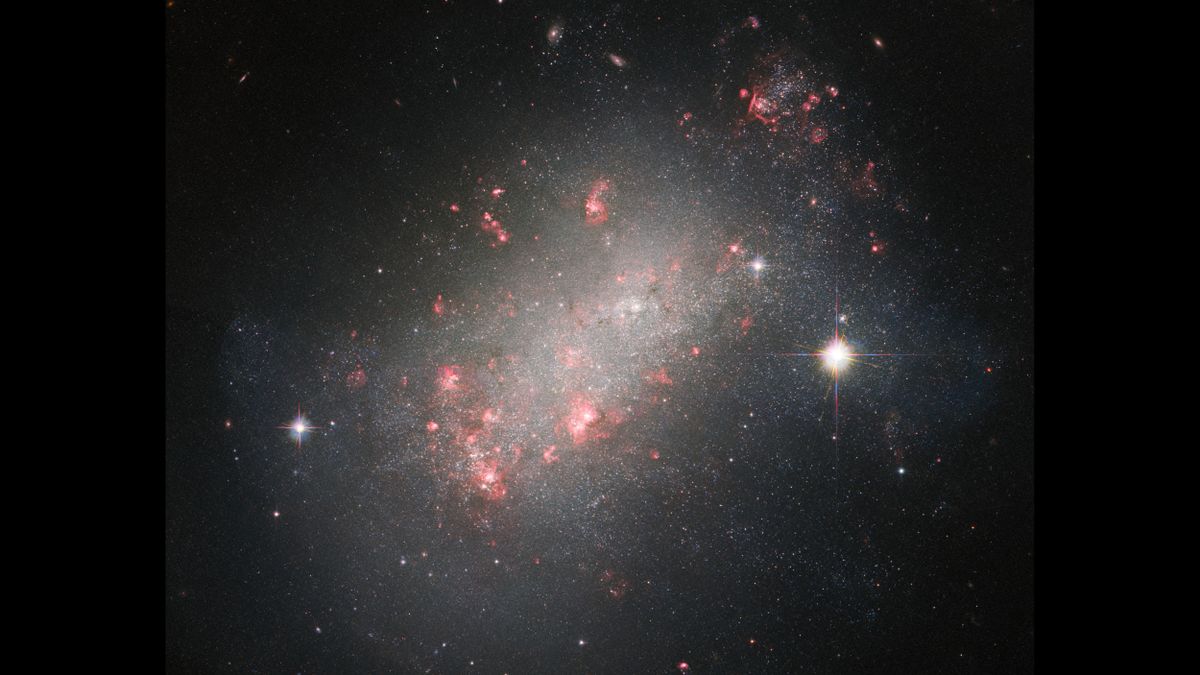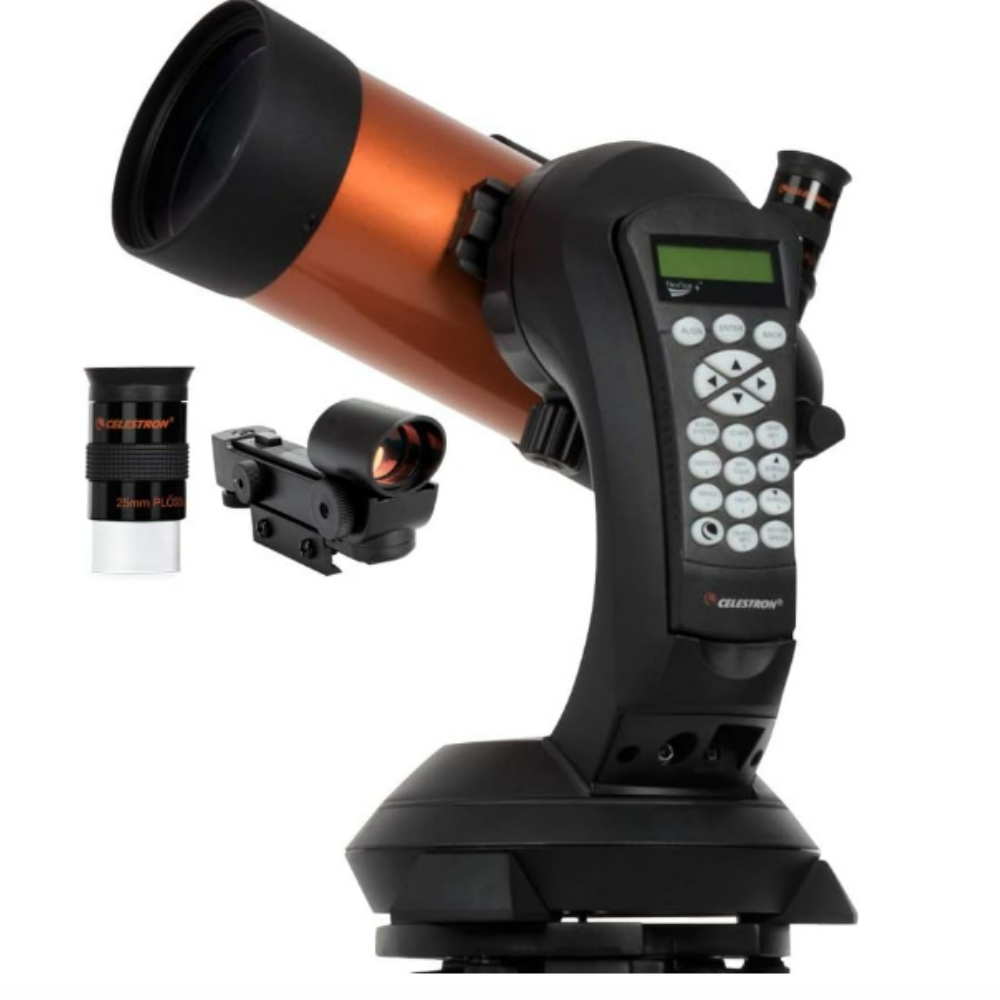
Bright red “blossoms” of star formation stand out in a new image of an unconventional galaxy.
A new photo from the Hubble Space Telescope captures a dwarf irregular galaxy called NGC 1156. Located 25 million light-years from Earth in the constellation Aries, NGC 1156 boasts a unique structure unlike most other galaxies — a “marvel of galactic morphology,” according to a statement from the European Space Agency (ESA), which is a partner on the mission.
“Its thousands of bright stars evoke a spiral galaxy, but it lacks the characteristic ‘winding’ structure,” ESA officials wrote in the statement releasing the new Hubble image on Aug. 22. “Yet it also radiates a diffuse glow, much like an elliptical galaxy and its core of older, redder stars.”
Related: The best Hubble Space Telescope images of all time!
The shining red blossoms scattered across the photo represent areas of intense star formation, which fuels the galaxy’s extreme energy. The ionized hydrogen gas outflows from these young stars gives off a red glow.
Spiral galaxies typically exhibit a central bulge made up of older, dimmer stars surrounded by a flat, rotating disk of hot young stars. While NGC 1156 does have a densely-packed center with older generations of stars, its younger stars are not contained in the telltale spiral arms circling the galaxy. Given it lacks any sort of distinct shape — neither a spiral nor an elliptical structure — astronomers have classified NGC 1156 as a dwarf irregular galaxy.
Related stories:
However, the galaxy is also classified as isolated because no other galaxies are located close enough to influence its odd shape and continuing star formation, according to the statement.
While Hubble has previously photographed NGC 1156, the new image was captured as part of a program called Every Known Nearby Galaxy, which aims to fill a gap in galactic observations.
“Astronomers noticed that only three quarters of the galaxies within just over 30 million light-years of Earth had been observed by Hubble in sufficient detail to study the makeup of the stars within them,” according to the ESA statement. “They proposed that in between larger projects, Hubble could take snapshots of the remaining quarter — including NGC 1156. Gap-filling programs like this one ensure that the best use is made of Hubble’s valuable observing time.”
Follow Samantha Mathewson @Sam_Ashley13. Follow us on Twitter @Spacedotcom and on Facebook.



